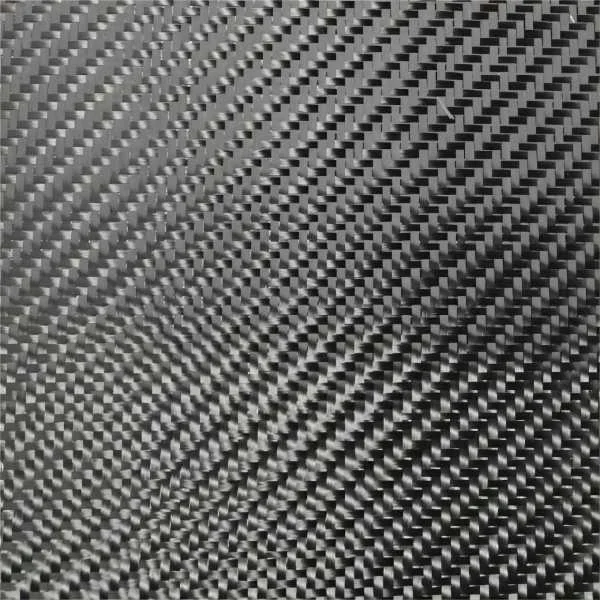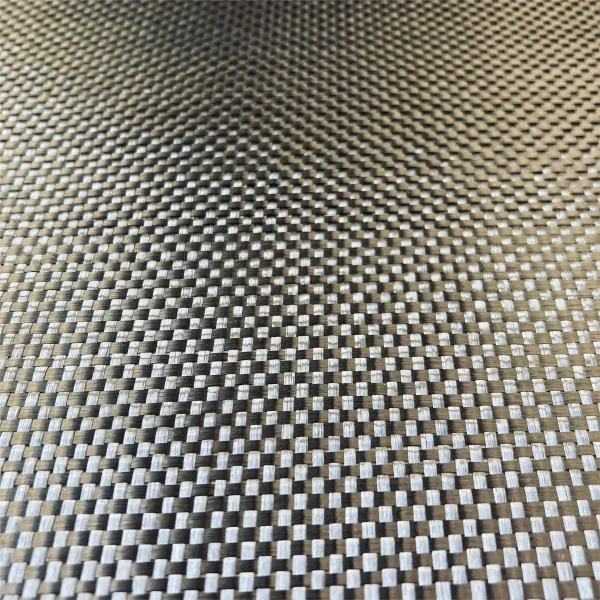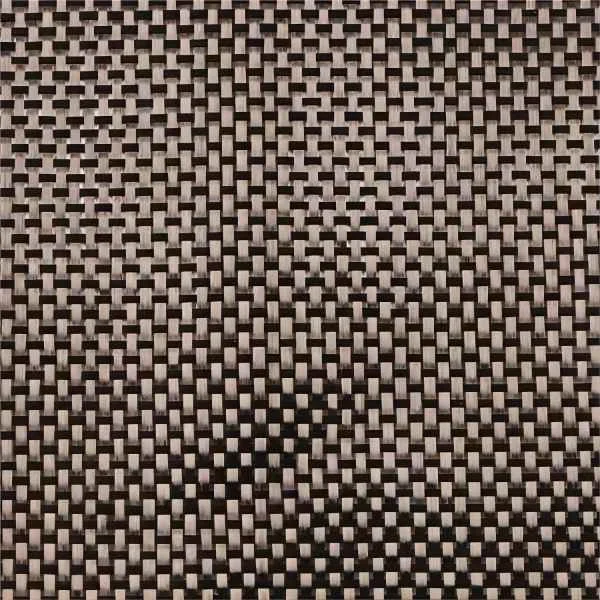Bidirectional carbon fiber fabric is a versatile material that has gained significant popularity in various industries due to its exceptional properties. In this blog, we will delve into the properties and uses of bidirectional carbon fiber fabric, shedding light on its unique characteristics and applications.
I. Understanding Bidirectional Carbon Fiber Fabric
Bidirectional carbon fiber fabric is a type of composite material composed of carbon fibers woven together in a crisscross pattern. The fabric is created by interlacing carbon fibers in both the warp and weft directions, resulting in a balanced and symmetrical structure. This weaving technique gives the fabric its bidirectional properties, making it strong and durable in multiple directions.
The manufacturing process of bidirectional carbon fiber fabric involves several steps. First, carbon fibers are produced by heating and stretching polymer fibers, usually made of polyacrylonitrile (PAN) or pitch. These fibers are then woven together using specialized machinery to create the fabric. The weaving process determines the fabric's weight, thickness, and weave pattern, which can vary depending on the intended application.

II. Properties of Bidirectional Carbon Fiber Fabric
Bidirectional carbon fiber fabric possesses several remarkable properties that contribute to its widespread use in various industries:
1.High Strength-to-Weight Ratio:
One of the most notable properties of bidirectional carbon fiber fabric is its exceptional strength-to-weight ratio. It is significantly stronger than traditional materials like steel while being much lighter. This property makes it an ideal choice for applications where weight reduction is crucial, such as aerospace and automotive industries.
2.Excellent Tensile Strength:
Bidirectional carbon fiber fabric exhibits excellent tensile strength, meaning it can withstand high levels of pulling or stretching forces without breaking. This property makes it suitable for applications that require materials with high load-bearing capabilities, such as structural components in aircraft and sports equipment.
3.Low Thermal Expansion:
Unlike many other materials, bidirectional carbon fiber fabric has a low coefficient of thermal expansion. This means it expands and contracts minimally when exposed to temperature changes. This property makes it ideal for applications where dimensional stability is critical, such as in the construction of precision instruments and high-temperature environments.
4.Chemical Resistance:
Bidirectional carbon fiber fabric is highly resistant to chemicals, including corrosive substances and solvents. This property makes it suitable for applications in harsh environments where exposure to chemicals is common, such as chemical processing plants and offshore structures.
5.Electrical Conductivity:
Carbon fibers in bidirectional carbon fiber fabric exhibit excellent electrical conductivity. This property makes it useful in applications that require materials with good electrical conductivity, such as in the aerospace industry for lightning strike protection and in electronic devices.
III. Applications of Bidirectional Carbon Fiber Fabric
Bidirectional carbon fiber fabric finds applications in various industries due to its exceptional properties. Some notable applications include:
1.Aerospace Industry:
Bidirectional carbon fiber fabric is extensively used in the aerospace industry for manufacturing aircraft components, including wings, fuselage sections, and tail structures. Its high strength-to-weight ratio and excellent fatigue resistance make it an ideal choice for reducing weight while maintaining structural integrity.
2.Automotive Industry:
In the automotive industry, bidirectional carbon fiber fabric is used to produce lightweight vehicle parts, such as body panels, interior components, and chassis reinforcement. By incorporating carbon fiber fabric, manufacturers can reduce the overall weight of vehicles, leading to improved fuel efficiency and performance.
3.Sports and Recreation:
Bidirectional carbon fiber fabric is widely employed in the sports and recreation sector for manufacturing high-performance equipment. It is used in the production of bicycle frames, tennis rackets, fishing rods, and other sports equipment, providing enhanced strength, stiffness, and durability.
4.Construction and Infrastructure:
In the construction and infrastructure sector, bidirectional carbon fiber fabric is used to reinforce concrete structures, such as bridges, buildings, and tunnels. The fabric's high tensile strength and corrosion resistance help enhance the structural integrity and longevity of these constructions.
5.Marine Industry:
Bidirectional carbon fiber fabric finds applications in the marine industry for manufacturing boat hulls, submarine components, and other marine structures. Its lightweight nature and high strength make it an ideal choice for improving vessel performance and fuel efficiency.
6.Renewable Energy Sector:
Bidirectional carbon fiber fabric is used in the renewable energy sector for manufacturing wind turbine blades and solar panel frames. Its high strength-to-weight ratio and resistance to environmental factors make it suitable for withstanding the demanding conditions of renewable energy installations.

IV. Advantages and Limitations of Bidirectional Carbon Fiber Fabric
Bidirectional carbon fiber fabric offers several advantages that contribute to its widespread use. These advantages include:
1.High Strength and Stiffness: Bidirectional carbon fiber fabric exhibits exceptional strength and stiffness, providing superior load-bearing capabilities and structural integrity.
2.Lightweight: The fabric's low weight contributes to weight reduction in various applications, leading to improved performance and fuel efficiency.
3.Corrosion Resistance: Bidirectional carbon fiber fabric is highly resistant to corrosion, making it suitable for applications in corrosive environments.
4.Design Flexibility: The fabric can be molded into complex shapes, allowing for design flexibility and customization.
However, bidirectional carbon fiber fabric also has some limitations to consider:
5.High Cost: The production process and raw materials involved in manufacturing bidirectional carbon fiber fabric contribute to its relatively high cost compared to traditional materials.
Susceptibility to Impact Damage: While bidirectional carbon fiber fabric is strong, it can be susceptible to impact damage, which may require careful handling and maintenance.
Limited Availability: Bidirectional carbon fiber fabric may not be readily available in all regions, limiting its accessibility for certain applications.
V. Future Developments and Innovations
The field of bidirectional carbon fiber fabric continues to evolve, with ongoing research and development efforts focused on enhancing its properties and addressing its limitations. Some future developments and innovations include:
1.Advancements in Manufacturing Techniques: Researchers are exploring advanced manufacturing techniques, such as automated weaving and 3D printing, to improve the efficiency and scalability of bidirectional carbon fiber fabric production.
2.Cost Reduction Strategies: Efforts are being made to develop cost-effective methods for producing bidirectional carbon fiber fabric, making it more accessible to a wider range of industries.
3.Integration with Other Materials: Researchers are investigating ways to combine bidirectional carbon fiber fabric with other materials, such as polymers and metals, to create hybrid composites with enhanced properties and performance.

Conclusion
Bidirectional carbon fiber fabric offers a wide range of properties that make it an ideal choice for various industries. Its exceptional strength-to-weight ratio, low thermal expansion, chemical resistance, and electrical conductivity make it a preferred material for aerospace, automotive, sports, construction, marine, and renewable energy applications. Despite its limitations, ongoing research and development efforts aim to overcome these challenges and further enhance the material's properties. As technology advances, bidirectional carbon fiber fabric is expected to play an increasingly significant role in shaping the future of various industries.

